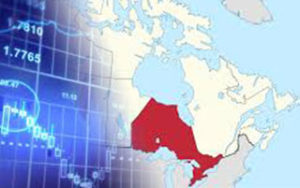News about Ontario’s impressive Q1 growth rate are topping financial news headlines all around. Its 0.8% Q1 GDP growth puts the province on pace to achieve a 3% annual growth rate. Those numbers are great in a world in which recession is just one hiccup away. However, those growth rates are not as impressive as they seem. There is definitely a lot more buzz around them than there should be.
Comparing Ontario’s growth rates with its level of unemployment – 6.4% – and it rate of inflation – 1.9% – then it is evident that the picture is not as rosy, and there are still some challenges ahead. In fact, within Canada, record unemployment figure belong to British Columbia – with about 5.8% – and inflation there is also marginally lower – 1.7%. These figures serve to put Ontario’s GDP growth in a national context.
When analysts place Ontario within the G7 context, there are a few caveats that must also be highlighted. Ontario might be doing better economically than almost all G7 members, but it is not doing significantly better, and at least when its figures are compared to the revised Q1 statistics for the, it is clear that the US could end up equaling or surpassing Ontario’s growth this year. The US also saw a Q1 growth rate of 0.8%, but over the same period of time had an unemployment rate of only 4.9%. That is about 24% lower than in Ontario.
Other G7 countries show weak growth figures, which makes it easy for Ontario to overtake them. Such is the case of Japan, which is on pace to grow a meager 1.7% this year, albeit with a population decrease of about 0.8%. This actually makes its growth more or less equal to that in Ontario, since the population there is supposed to grow by about 1% this year. The population dimension is crucial also to put growth figures in context and draw a more complete picture of what is really happening.
While an annualized growth of 3% for Ontario’s GDP is certainly good news, when those figures are put in context and compared with other G7 members, they do not stand out as much. The final caveat and probably the most important in this regard is that growth is projected to reach 3% this year based on that 0.8% Q1 reading.
Nevertheless, it is important to keep in mind that unlike G7 members, Ontario does not control its own monetary policy. That puts it at risk of getting stuck in a situation in which the Canadian Dollar is not weak enough to support the export growth rate that has been such a crucial catalyst for Ontario’s GDP growth rate. Other G7 members can – and probably will – manipulate their own monetary policies further to achieve their goals.




